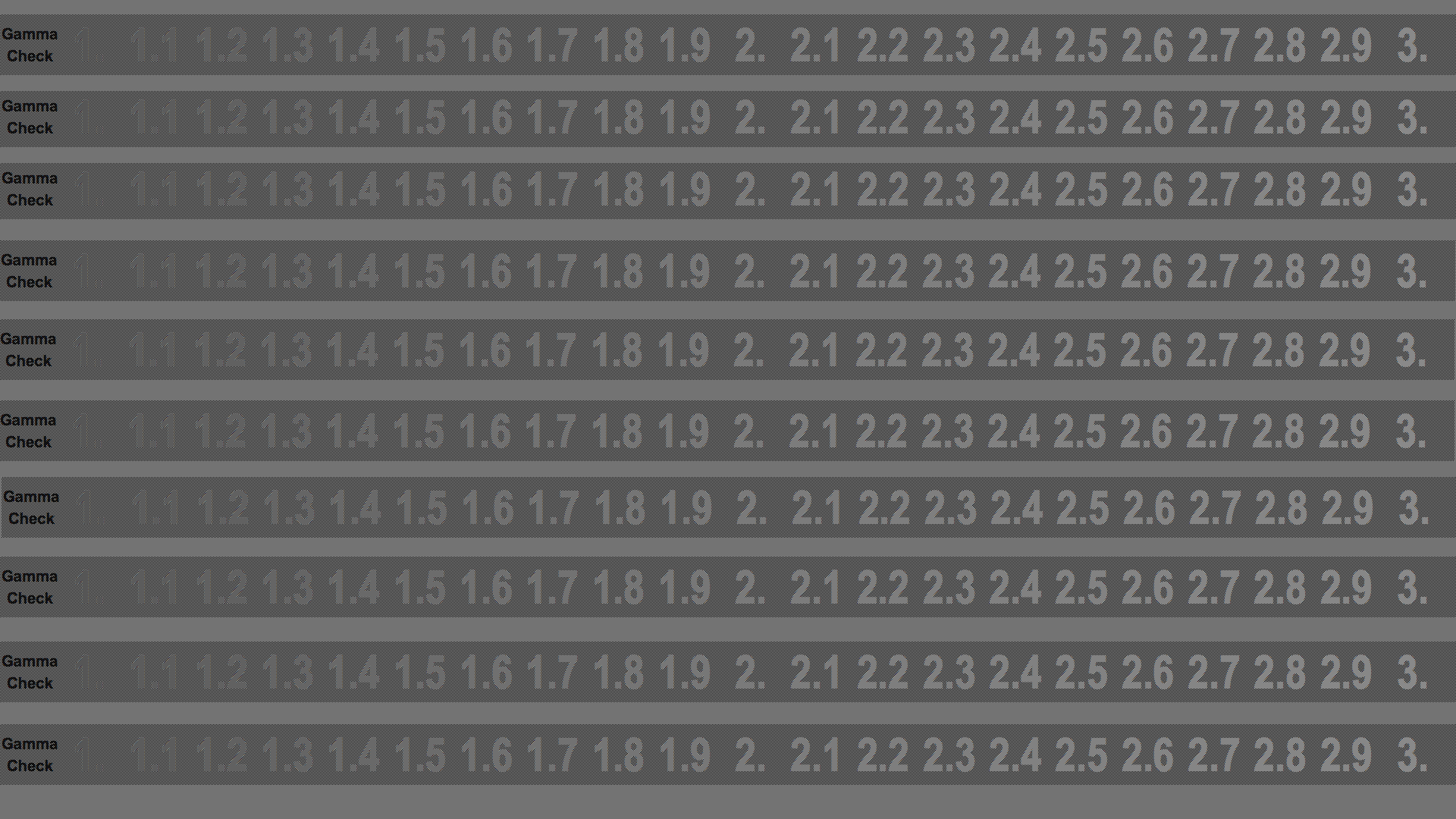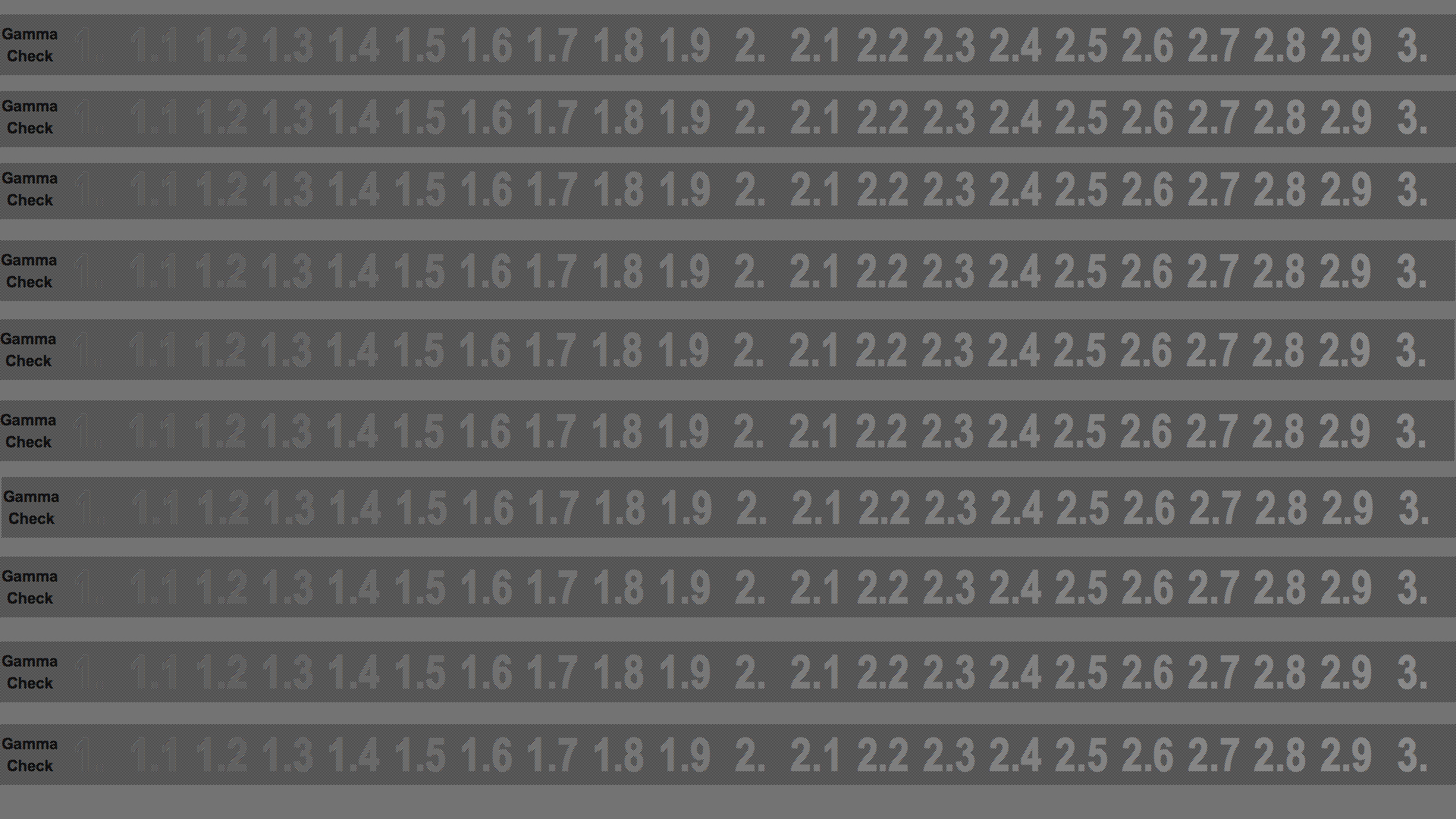- From: Lars Borg <borg@adobe.com>
- Date: Fri, 7 Jan 2022 01:52:56 +0000
- To: Simon Thompson - NM <Simon.Thompson2@bbc.co.uk>, "public-colorweb@w3.org" <public-colorweb@w3.org>
- Message-ID: <3FDA5D78-66C0-4BFE-82EE-594AA5A74298@adobe.com>
Hi Simon, For this we should follow actual practice on computer displays. This might differ from color theory and/or from actual practice on TV sets. So far I have not been able to find a case that confirms your statement that device gamma changes with brightness. Can you provide more specifics, such as specific device configurations where you have verified that this happens? Also how do you test to verify the gamma? I’ve tested with the presented test pattern on the following devices and see no gamma change when changing brightness. Gamma reads close to 2.2. iMac Pro 2017 w MacOS 11.6 HP DreamColor display Mac Pro 2015 w MacOS 10.15 I do see a change on LG OLED TV B17, but it looks like clipping and not like a gamma change. I suspect it’s because it follows legacy CRT model, not digital computer model for brightness. Also, the test patterns seem not to work well on that device, so I find the test inconclusive. Any suggestions for a better test pattern? Also, I might ask some display experts that I know. Lars From: Simon Thompson <Simon.Thompson2@bbc.co.uk> Date: Thursday, January 6, 2022 at 2:28 AM To: Lars Borg <borg@adobe.com>, "public-colorweb@w3.org" <public-colorweb@w3.org> Subject: Re: sRGB Connection Space - Slides and Comments Hi Lars, I believe some displays and OSes do compensate for the display brightness. sRGB was initially designed for CRT displays which change gamma as the peak brightness is adjusted. (This was more a function of the driver circuitry, but by a quirk of fate worked well at matching perception) We’ve seen modern Mac laptops adjusting images on internal and external monitors, Windows PCs adjusting the image based on user input and mobile phone displays adjusting to ambient lighting conditions. What I haven’t done is check exactly how – whether a gamma change is always used or not. But I think we can assume the changes are based on a standards compliant image. Best Regards Simon -- Simon Thompson MEng CEng MIET Senior R&D Engineer BBC Research and Development From: Lars Borg <borg@adobe.com> Date: Wednesday, 22 December 2021 at 21:08 To: Simon Thompson - NM <Simon.Thompson2@bbc.co.uk>, public-colorweb@w3.org <public-colorweb@w3.org> Subject: Re: sRGB Connection Space - Slides and Comments Hello Simon, #2. AFAIK, OSs do not compensate for sRGB display brightness. At least on MacOS, the same gamma is used at 80 and 500 nits (or 48 and 250 nits). Confirmed with gamma test patterns on both internal and external displays. And the display profile is the same regardless of the brightness setting. That seems to align with common use of sRGB content. Just throw the pixels onto the sRGB display, unconverted. Can the group provide info on which OSs actually compensate for display brightness? Maybe it happens on cell phones?? Lars From: Simon Thompson <Simon.Thompson2@bbc.co.uk> Date: Tuesday, December 21, 2021 at 4:51 AM To: "public-colorweb@w3.org" <public-colorweb@w3.org> Subject: sRGB Connection Space - Slides and Comments Resent-From: <public-colorweb@w3.org> Resent-Date: Tuesday, December 21, 2021 at 4:49 AM Hi all, Please find attached my slides from last night. I have reviewed the notes and have three comments/questions. 1. Chris Cameron mentioned that the connection space was linear. I’ve changed the slides from non-linear which I thought was chosen to allow the end user similar input values for blends, fades etc. Is linear correct? 2. sRGB has a fixed viewing peak brightness in the IEC specification of 80 cd/m2 with a fixed gamma. We understand that many operating systems make adjustments to accommodate different brightness displays and different viewing environments. This process assumes a standard compliant signal. Therefore, I think that Chris Seeger’s suggestion of mapping 203cd/m2 PQ to Extended sRGB 1.0 is a good idea, but it will need a second step to ensure that the shadows and midtones match between the scaled PQ and the sRGB. (The HLG transform in the git repo matches the shadows and midtones) 3. Provided 2) correctly matches the shadows and midtones, I think Chris Seeger’s requirements about transforming between HDR formats should be okay (remembering that this is a minimal viable product and may be improved upon). Best Regards Simon -- Simon Thompson MEng CEng MIET Senior R&D Engineer
Attachments
- image/png attachment: gamma_check.png

- image/jpeg attachment: gamma_check.jpg

- application/pkcs7-signature attachment: smime.p7s
Received on Friday, 7 January 2022 01:53:17 UTC